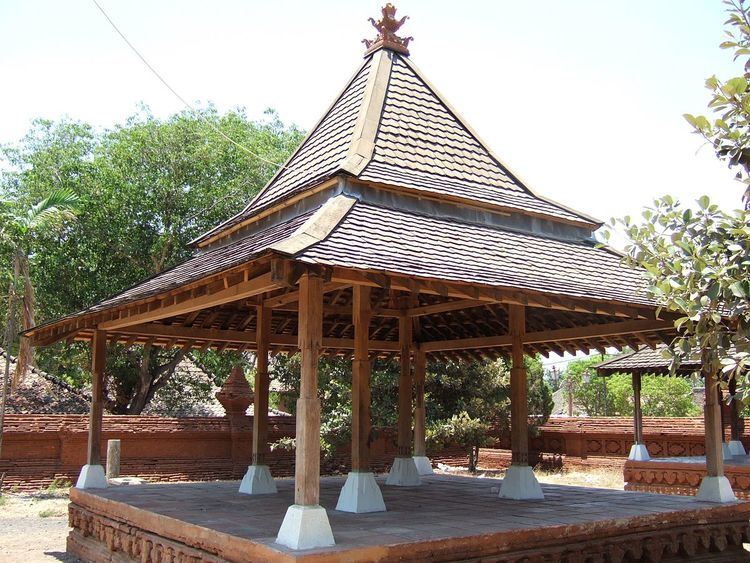Province West Java | Phone +62 22 7231341 | |
 | ||
Address Plaza IBCC Lantai LGF, Jl. Jenderal Ahmad Yani No. 296, Kacapiring, Batununggal, Kacapiring, Bandung, Kota Bandung, Jawa Barat 40271, Indonesia Similar Informa, Multi Karya, PT Urbane Indonesia, Asuransi Ramayana PT ‑ Band, PT PLN (Persero) ‑ Kantor Di | ||
A pendopo or pendapa is a fundamental element of Javanese architecture; a large pavilion-like structure built on columns. Either square or rectangular in plan, it is open on all sides and provides shelter from the sun and rain, but allows breeze and indirect light. The word pendopo is a variant on the Sanskrit word mandapa ("hall"). The Dutch writer Multatuli in his colonial reformist novel Max Havelaar described the pendopo as "next to a broad-rimmed hat, an umbrella or a hollow tree, a pendopo is undoubtedly the simplest representation there is of the concept of 'roof'".
Derived from ancient Javanese architectural elements, pendopo are common ritual spaces primarily intended for ceremony, and also for a variety of purposes such as receiving guests in the compounds of wealthy Javanese, and even as cottage industry work spaces. Pendopo can be constructed as a stand-alone structure or, attached to walled inner structure called dalem, it formed the front part of the omah, the proper Javanese house.
History
The oldest surviving images of ancient Java vernacular architecture appears in Borobudur reliefs, among others the stepped roof type pendopo. They once sheltered the institutions of ancient Javanese kingdoms, such as law courts, clergy, palaces, and for public appearances of the king and his ministers. In 9th century Ratu Boko complex near Prambanan, there is traces of square elevated stone bases with umpaks, stones with hole to put wooden pillars on it. The similar structures also can be found in 14th century Trowulan dated from Majapahit era, where square brick bases with umpak stones suggest that some pendopos once stood there. Because the pillars and the roof was made from wooden organic material, no trace of the pendopo roof remains. The pendopo with faithful Majapahit brick-base style can be found in 16th century Kraton Kasepuhan, Cirebon, as well as 17th century Kota Gede, Yogyakarta. These evidences suggests that the design has not changed much for over a millennia.
They remain fundamental components of Javanese kraton ('palaces') with European influences often being incorporated since the 18th century. The majority of pendopo are constructed from timber but masonry versions are in existence such as used in the Kraton Kanoman in Cirebon. Wealthy modern day home builders, in attempting to design homes that draw on traditional Javanese experience of space, have dismantle, transported and re-assembled pendopo forming modern-traditional hybrid homes.
